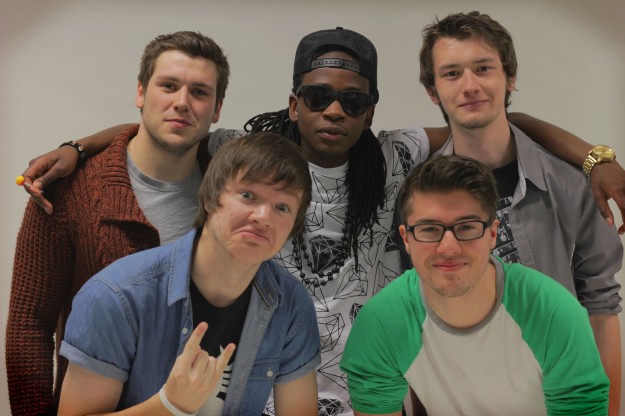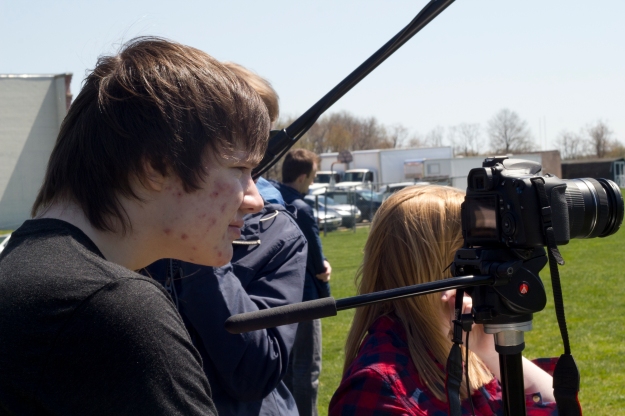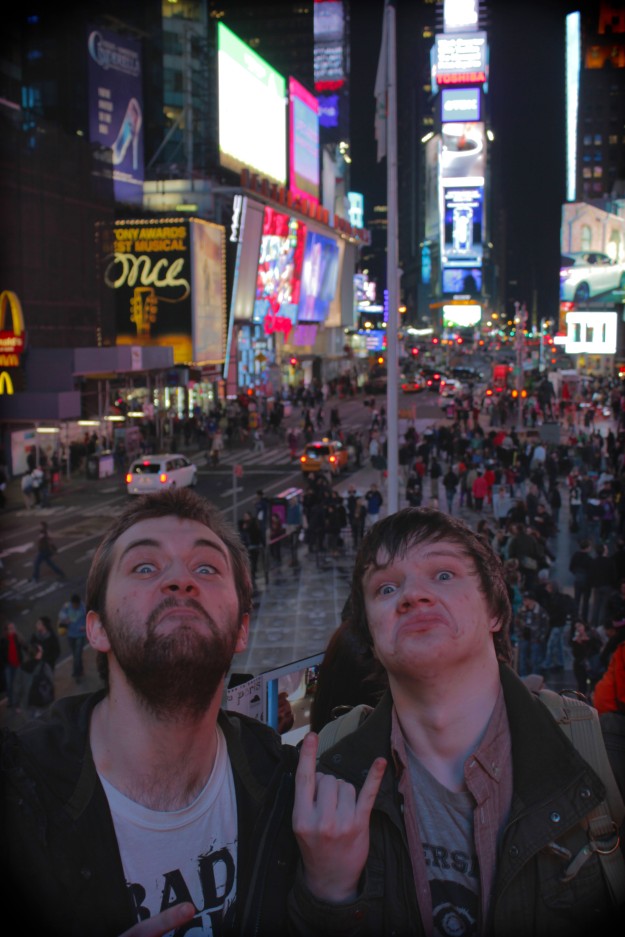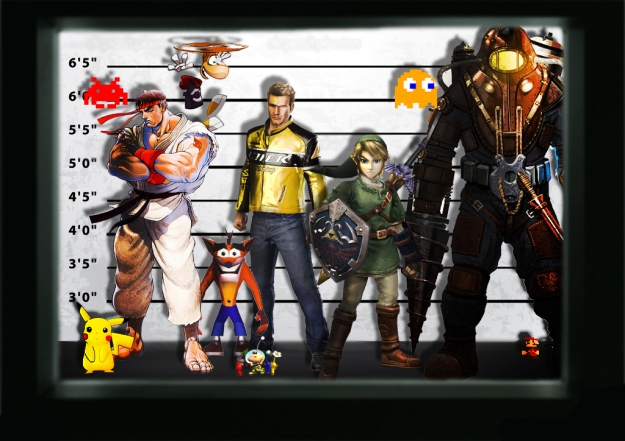Planning – 05/02/2013
What I did
The cours leaders planned a trip to Berlin for Media Production students to go and either attend a film festival or to have the chance at making a short film in a foreign country, as an aspiring film maker, there was really only one option for me, I decided that I wanted to make a short film. I quickly found myself a reliable and talented crew who also wanted to make a short film production. Once we had our team together, we all started writing potential scripts to make when we go to Berlin.
After a short selection process, a script I had written, “The Runner” was chosen to be made. From this point on it was time to start production. As I was appointed the role of Writer and Director, my job was essentially done at this stage, all I could do was revise the script and make it better for when we go out into the field. The majority of the work at this stage was appointed to our brilliant Producer Emily who managed to secure an actor and permission to film in a block of flats as well as find lots of potential locations for when we get around to filming. The rest of us overseen this procedure and would sometimes offer advice and suggestions, but for the most part she didn’t need it as she worked fantastically.
What I learned from the Process
From this process I mostly learned to take a back seat once my job is done and let others get on with their own thing. If I had kept interfering and trying to “Improve” the producing process, I would had just gotten in Emily’s way and made the tasks not as bearable and they wouldn’t have been done as effectively.
Letting someone else get on with their own job and not trying to do everything at once allows you to concentrate and make better work, as well as letting others concentrate on their job. While Emily was producing I had some time to think about my script in detail and think of a lot of different ways to write it and ways to turn the story, which proved to be beneficial.
Location Scouting – 07/02/2013
What I did
When we arrived in Berlin, after a day of settling in and learning about the areas surrounding our hostel, we dedicated a day to setting out and going around the city and checking out all of our potential locations and finding new potential locations.
This was a very long and draining day, unfortunately the day we decided to do this was one of the snowiest days of the year and we had to travel around the capital of Germany. When we found some of our locations we spent a considerable part of our time looking at whether they would work visually and what they would add to the story, and if there was anywhere else that we could use that would be a better location.
We found that a lot of the locations we were set on using before we came to the country turned out to be not as good as we expected, and we discovered some absolute gems hidden within the city, so this turned out to be an extremely beneficial exercise.

Brett and Emily after a long day of scouting.
What I learned from the Process
On very simple terms this day has taught me about the importance of location scouting, it added so much to the film and made us a lot more prepared. But on a more advanced level, it really helped me develop my skills in thinking about somewhere as a visual spectacle rather than just a location on a map. I was evaluating what the locations would add to our film and how they would look on camera. Thinking visually is probably one of my down points which I need to focus on a lot more in order to become a more professional film maker.
Pre Production – 08/02/2013
What I did
With the new knowledge of what our locations were and what we wanted the film to look like we were able to mock-up some accurate story boards and shooting scripts, as well as maps, time sheets and schedules which we would use to travel around and efficiently shoot the film.
Our producer also mocked up a contract for our actor regarding any profits that the film would make and to make sure he gets a fair share of the money. Unfortunately disaster struck as just before we were about to go to bed to prepare for a long day of shooting, our actor messaged us and told us he was not able to do it anymore, as something else has come up. As you could imagine, we were all absolutely furious, but something had to be done, we still had to make a film.
Utter despair had struck the group and morale was at an all time low, I tried to inspire hope within the group but it proved to be a herculean task. I tried my absolute best to make sure that we could still make a film and desperately searched for another actor on short notice, which amounted to nothing. In the end, we were blessed with Dan Hooper, he took a bullet for the team and stepped down from his job as sound and lighting operator and decided to be in the film. With this information I quickly mocked up new plans for the shoot before we hurried to get some rest to take on the hideously intense day of film making that was ahead of us.
What I learned from the Process
Having a project slip through your fingers at such a late stage in production is the most heart breaking feeling of all time. I think that out of everything this has taught me the absolute most valuable lesson from any of my projects, Never give up. The odds were absolutely stacked against us, but we still persevered and got out and made a film.
In terms of preparation, from this point on if there is something as vital as making sure that an unreliable actor shows up on set, I will make sure that they have signed a prior contract that makes sure they absolutely have to be there. Unreliable people are the hardest part about no budget film making, because people aren’t being payed they see it as not a big deal if they drop out, causing massive complications for the film makers such as myself.
Shooting – 09/02/2013
What I did
On day 1 of shooting, we were shooting the majority portion of the film in one location, an abandoned airport, which we had to find out what times we could get into it a couple of nights prior. I was directing the shoot and I feel I did a fairly good job of it, my policy is to get everything you need and get some more. Storyboards are great for the majority of the film, but I felt like asking my Director of Photography Brett to get some shots he felt added to the film gave the production a sense of freedom and kept morale up and kept the day fun, which could have been otherwise quite a miserable experience if we were sticking to a strict schedule on a cold and horrible day.
With my prior knowledge learned from shooting “Frozen Vengeance” I knew the necessities for shooting long hours outdoors, and especially in the snow, so I made sure that there was enough time for us to go and stock up on food and drinks to keep us energised throughout the day to make production continue at a steady pace.
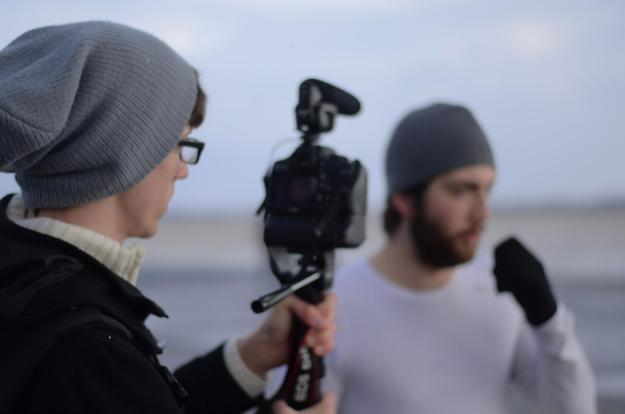
Brett setting up a shot on day 1 of the shoot.
What I learned from the Process
This day just didn’t teach me much that I didn’t know, but it more improved my directing skills. I feel as if that I am settling into a directing style where I can talk with authority and confidence to my team but also feel as if I am not dictating to them, and give them a sense of freedom within their work.
It also reinforced the importance of the little things to do with preparation not preparation to do with the film but practical things such as wrapping up real warm and stocking up on food for the crew so production can continue without any trouble.
Shooting – 10/02/2013
What I did
The second day of shooting we were in our second location, the flats which our producer had organised for us. This situation was a little different from shooting outside, we had to be respectful as it was someones house and moving everything around wasn’t really an option, it called for some resourceful thinking when setting up shots and telling Dan how to act and move around the scene, to make sure he is framed properly to make sure we don’t accidentally get something in the background that would ruin the shot, such as the tenants flat decorations.
Later on we were filming in more locations outside and around the city, the remainder of what we needed to complete to finish the film. When on certain shoots I felt that the team was taking too long, so I tried to hurry them along, we didn’t manage to get as much shot as we would have liked, but I think there was just enough to make the film.

Joe trying to stay cheerful after a tiring 2nd day shooting.
What I learned from the Process
From this process I learned how to be respectful of people who are helping you, such as when we were in Simon’s flat filming for the first half of the day, we had to respect his wishes and only do as he wished. These limitations did hinder the film a little at first, but it forced us to be resourceful and work around problems.
I feel as if I have learned a lot about directing a team as well, we would have missed out on a lot of shooting opportunities if I had not made the team be more hasty with the shooting.
Post – 11/02/2013
What I did
After we had finished all the shooting, we compiled together a rough cut of the rushes. Unfortunately because of the many problems we ran into, the film didn’t feel complete, and there was nothing we could do about it as we were going to go home the following day. Because of this the film is still in the editing process as I am re-imagining it and trying to use the footage we shot in a completely different way. This process is fairly upsetting, but I think that even though things didn’t go according to plan, we are able to make something of value out of the project, and I am excited for what I am going to make of it in the future.
What I learned from the Process
This process has taught me to have faith in my writing. This is because after suffering tragedies within the production process and the morale dropped, the faith in the script followed with it, and my team were starting to question the legitimacy of completing the film. This forced me to come up with a compromise and try to find a way to change the ending and finish the film when we returned home. This was the killing blow in the project and I wish that I had never had made this decision, if I did not and I had forced the group to work a lot more and complete the film, although it would have been extremely difficult, the film may have been of a better quality.
Even after all of this, another thing I have learned, or rather a reinforcement of what I have previously learned on this project is Never give up, in every aspect. Even though the film isn’t especially complete, what we shot was absolutely fantastic and it can still be used, so I am inspired to make something great of this project.
Peer Assessment
Joe Jepps [Sound and Lighting Technician]:
“I’m not usually one who works well taking direction however, from Tom I felt comfortable that the production was head in the right direction”

